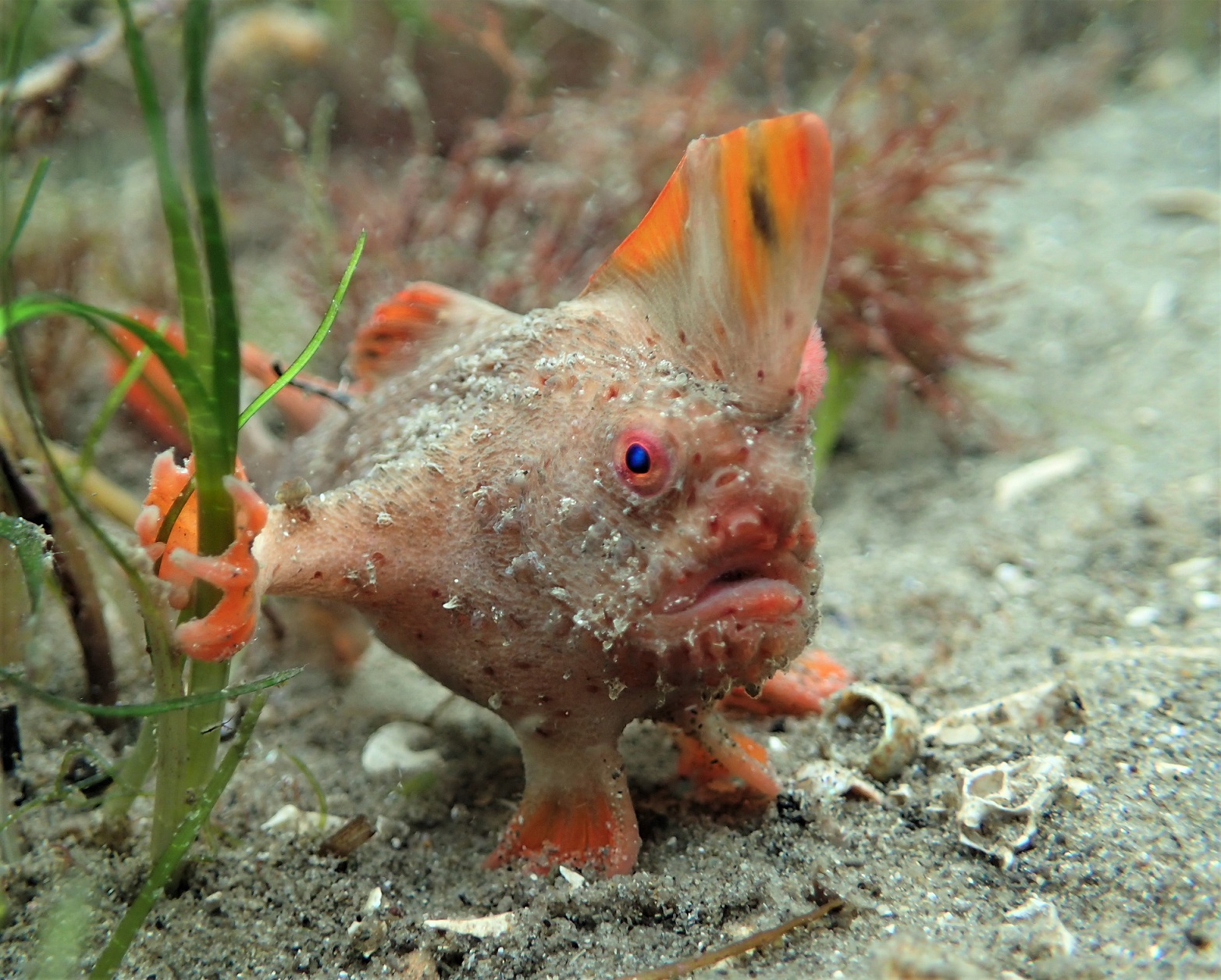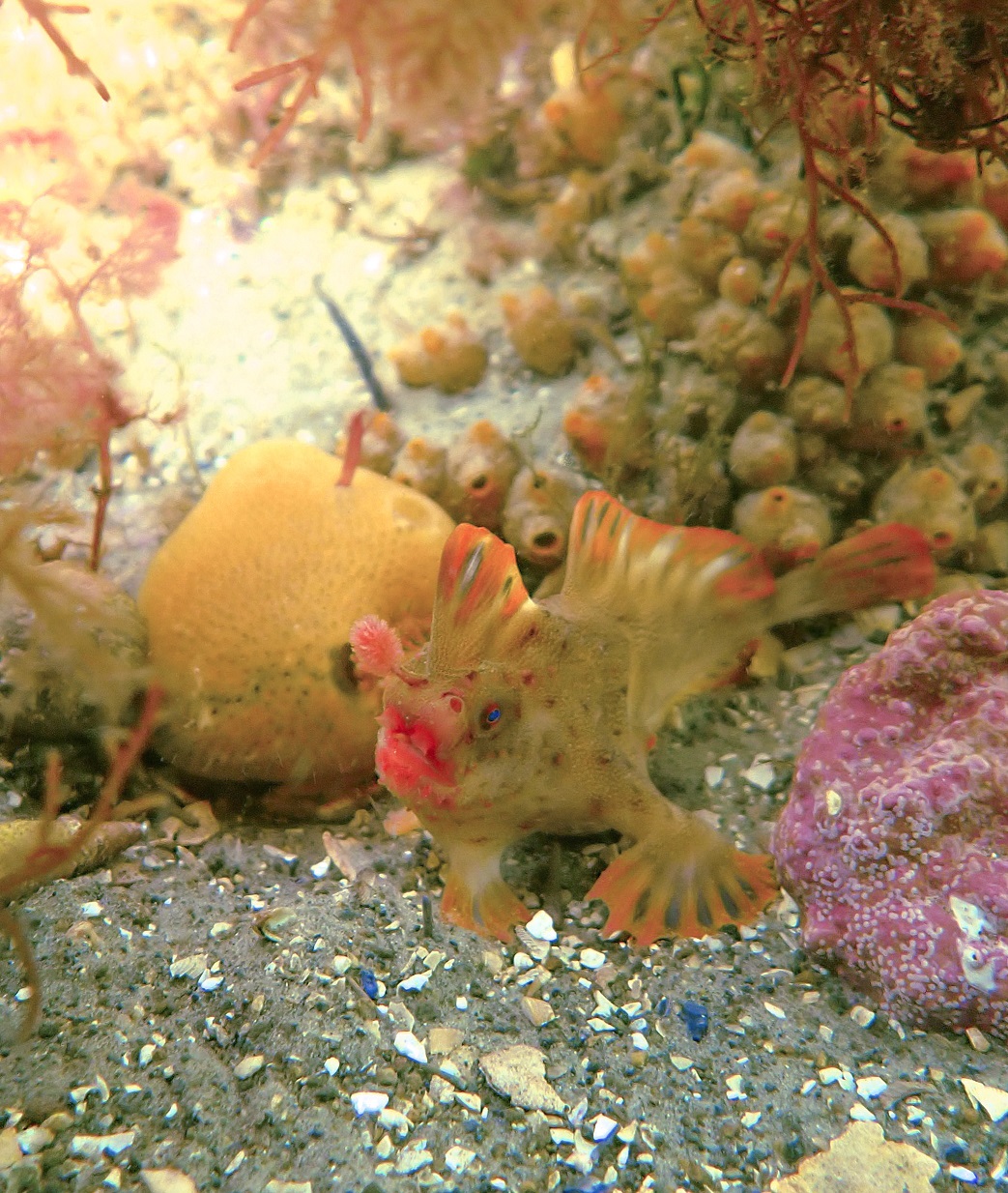
A tiny marine anglerfish, found only in waters off Tasmania and near extinction with just 100 remaining in the wild, is being given a better chance at survival thanks to a funding partnership announced in Hobart today.
The Foundation for Australia’s Most Endangered Species (FAME) has committed just over $1 million over four years to the University of Tasmania’s Institute for Marine and Antarctic Studies (IMAS) to help recover the Red handfish from the brink of extinction.
The challenge is formidable, according to Dr Jemina Stuart-Smith who heads the Handfish Conservation Project. “The threat to its survival is imminent and with so few surviving fish, time is of the essence. We are extremely grateful to FAME for the funding commitment at this critical point in what is an ongoing and demanding conservation project,” Dr Stuart-Smith said.
FAME’s CEO, Mrs Tracy McNamara, says that the Foundation is delighted to partner in a project that stands a strong chance of preventing a species from becoming extinct.
 “Whenever possible, we select projects where we join with like-minded, capable partners. The Red Handfish conservation effort reflects all aspects of FAME’s conservation objectives: captive breeding, ecosystem restoration, pest species management and all the associated environmental work that these entail,” Mrs McNamara said.
“Whenever possible, we select projects where we join with like-minded, capable partners. The Red Handfish conservation effort reflects all aspects of FAME’s conservation objectives: captive breeding, ecosystem restoration, pest species management and all the associated environmental work that these entail,” Mrs McNamara said.
Dr Stuart-Smith commended FAME for its recognition that conservation should not focus exclusively or even principally on endangered keystone predators or charismatic mega-fauna.
“The Red handfish is part of Australia’s unique fauna and represents an ancient lineage that scientists do not yet fully understand. With global biodiversity loss and unprecedented rates of species declines, we need to apply the brake to the continuing loss of endangered species,” she said.
Part of this project involves establishing what is essentially a “school” where captive-raised Red handfish will be “taught” to fend for themselves, before being released into the wild.
Dr Andrew Trotter, who co-leads this work, stressed that the project will face challenges, particularly due to the population having reached a critically low level.
“However, the funding from FAME will allow us to put in place a dedicated team. We hope to make good progress in the first year in terms of habitat management and awareness, housing the fish in captivity and facilitating captive breeding,” Dr Trotter said.
“What will success look like? It will result in more available habitat, mitigation of threats and an increase in the captive population.
“We are still working out the Red Handfish’s thermal and environmental requirements but one of the questions that FAME’s funding will help answer is whether the species can be moved (translocated) to new areas and so establish what we call ‘insurance’ populations,” he said.
This initiative complements the Australian Government’s substantial contributions to the Handfish Conservation Project as part of the Australian Government’s Ocean Leadership package, and to Natural Resource Management South (NRM South) for habitat restoration works (see more).
Threatened Species Commissioner, Dr Fiona Fraser, said the Red handfish is one of 110 species prioritised for recovery under the Australian Government’s Threatened Species Action Plan.
“This new funding, combined with the captive rearing and habitat restoration activities we have previously supported, is giving the critically endangered Red handfish a lifeline,” Dr Fraser said.
Images:
Published 17 May 2023